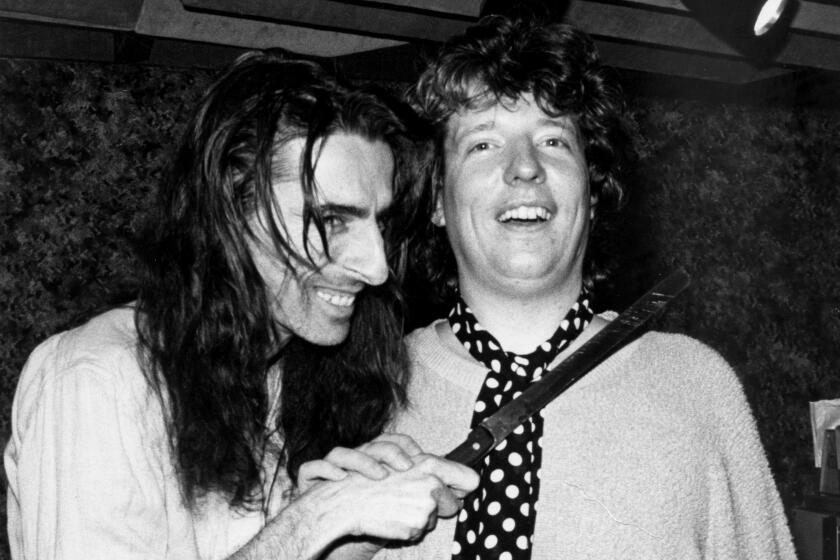Yo La Tengo runs for covers in ‘Stuff Like That There’
- Share via
Yo La Tengo, “Stuff Like That There” (Matador). In 1990, the Hoboken, N.J., rock band Yo La Tengo issued “Fakebook,” an album of cover songs of artists including the Flamin’ Groovies, the Kinks, Daniel Johnston, John Cale and others. It’s a beautiful record, and its sort-of sequel is too. Like the first, this one is often pensive, showing the calmer side of husband and wife Ira Kaplan and Georgia Hubley with bassist James McNew and guitarist Dave Schramm. Over a consistently surprising career, can get loud and distorted if so inclined.
SIGN UP for the free Essential Arts & Culture newsletter >>
“Stuff Like That There” runs a range. Their take on the Cure’s “Friday I’m in Love” ditches the forlorn new wave for acoustic guitar driven propulsion and drummer Hubley’s smokey voice. “Naples,” a rendition of a lovely song by the indie rock band Antietam, shines light on unsung peers. Elsewhere the trio covers work by the Lovin’ Spoonful, Hank Williams, indie guitar band Great Plains and others. Innovative? Hardly. Comforting? Most certainly.
Various Artists, “Folksongs of Another America: Field Recordings from the Upper Midwest, 1937-1946” (Dust-to-Digital/University of Wisconsin Press, $60). This fascinating, important book, four-CD and DVD compiles field recordings made in Wisconsin, Minnesota, Chicago and Washington, D.C.
Who knew that the songs of Wisconsin lumberjacks were as odd and singular as the stuff being made in Appalachia or the Mississippi delta? And of course lumberjacks working with wood all day would use some of it to build handmade musical instruments.
Compiled by folklore scholar James P. Leary, this collection features rural music from first-generation immigrants and communities — African American, German, Finnish, Icelandic, Scots Gaelic, Serbian and Swedish and more — exploring their new homes while refusing to abandon their musical roots. Extensively researched, the 400-page hardbound book highlights the artists within while rescuing from history dozens of essential photographs of musicians in their element.
Spotify’s “Discover Weekly” algorithm-generated playlists (Spotify). As streaming services such as Spotify, Apple Music and Rdio digest and analyze more data about our listening habits, their computing power is generating impressive results. Like Netflix’s recommendation engine, which aims to reduce the stress that comes with the oft-baffling question, “What do I want to watch?,” Spotify’s engine generates so many quality listening tips that it’s starting to feel like cheating. Who needs Pitchfork, Resident Advisor or, hell, Essential Tracks to tell us what to hear when devices are getting so accurate?
Spotify’s “Discover Weekly” tool runs the game. Each week it generates a customized playlist based on your listening history, and the stuff it knows about my past, present and future tastes is a bit unsettling. The past few playlists have tipped me to previously unheard tracks by old and new artists including the Cleaners from Venus, Helado Negro, Detroyer and HTRK. The downside? Job security for “curators.”
Twitter: @LilEdit
More to Read
The biggest entertainment stories
Get our big stories about Hollywood, film, television, music, arts, culture and more right in your inbox as soon as they publish.
You may occasionally receive promotional content from the Los Angeles Times.











